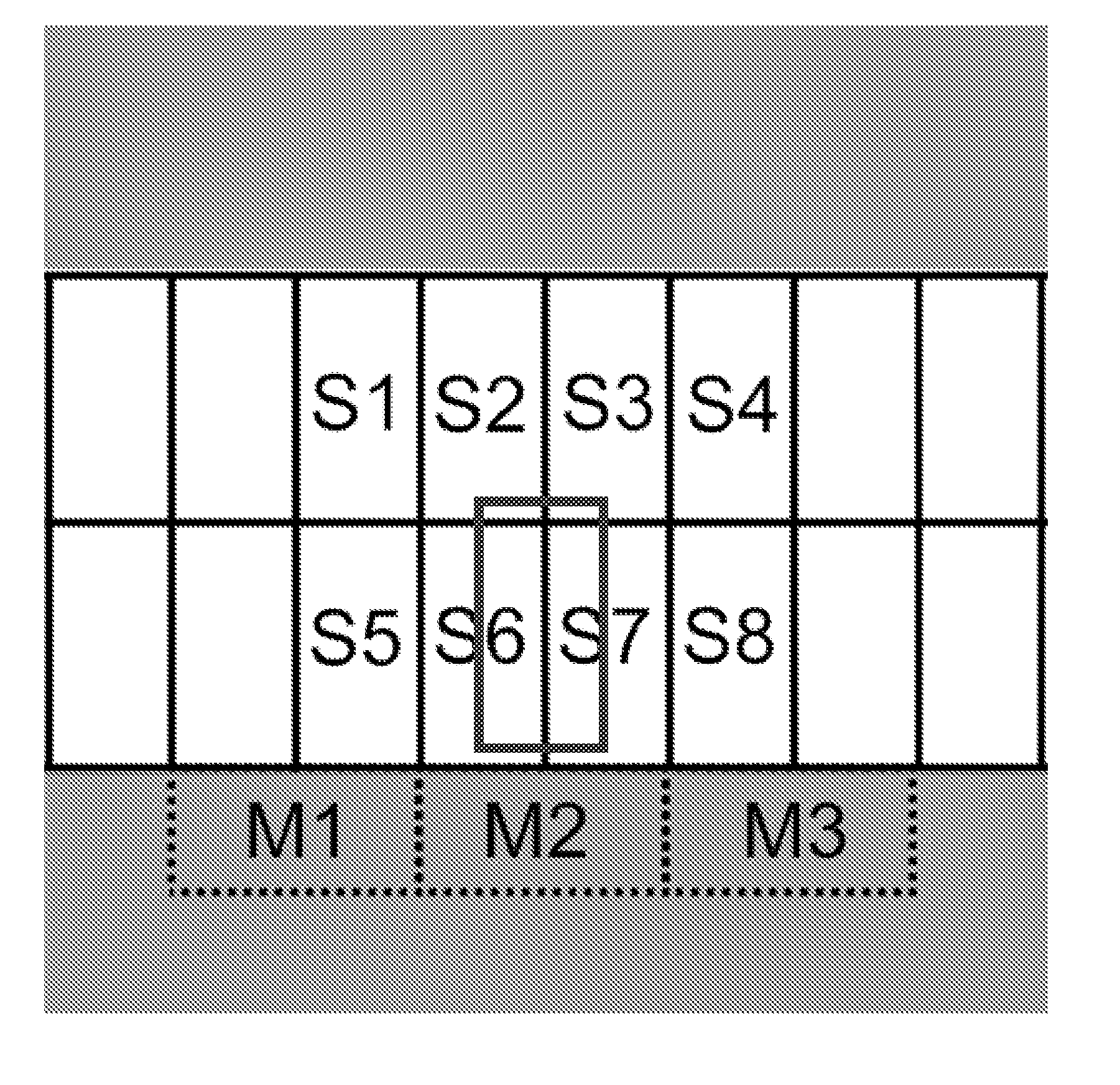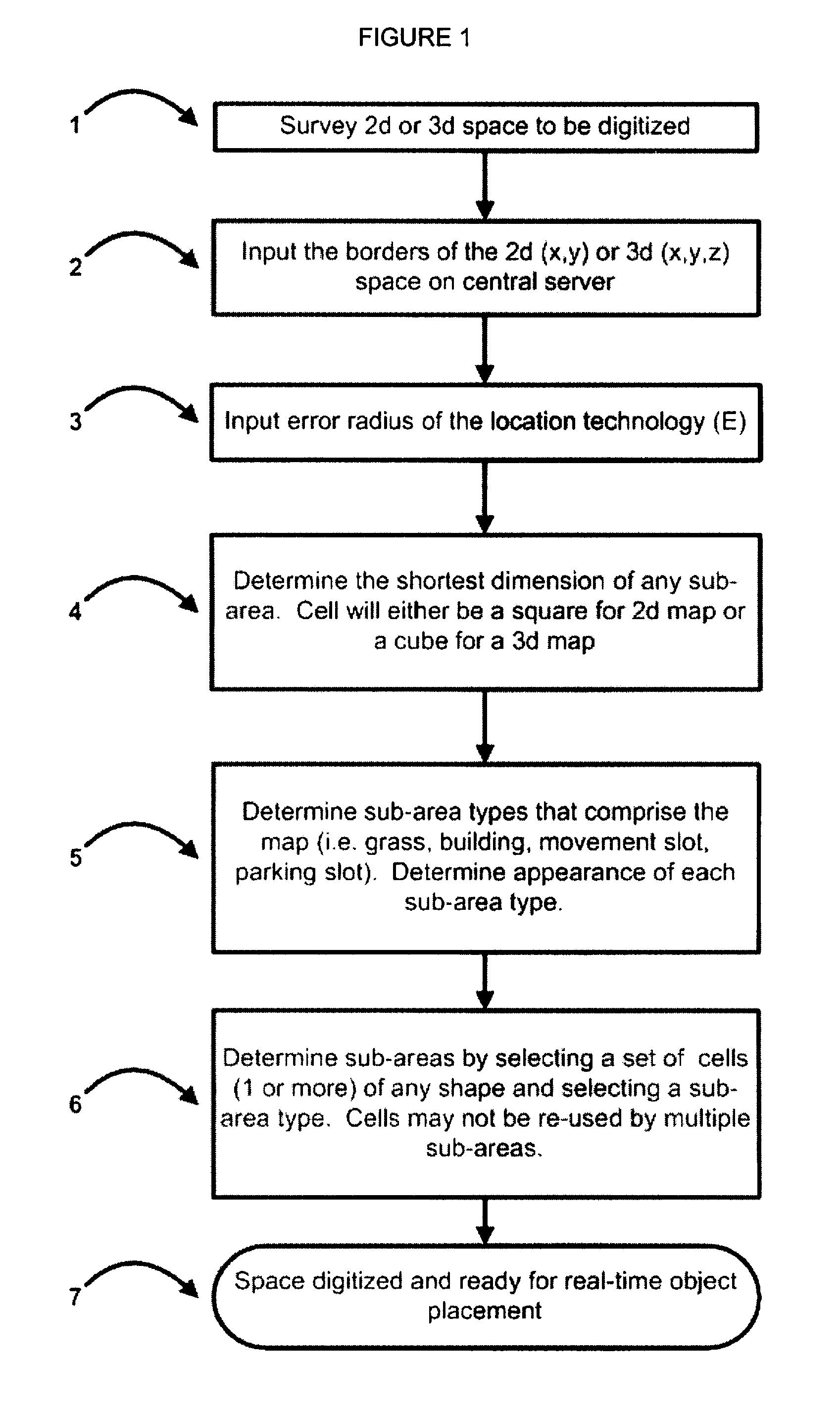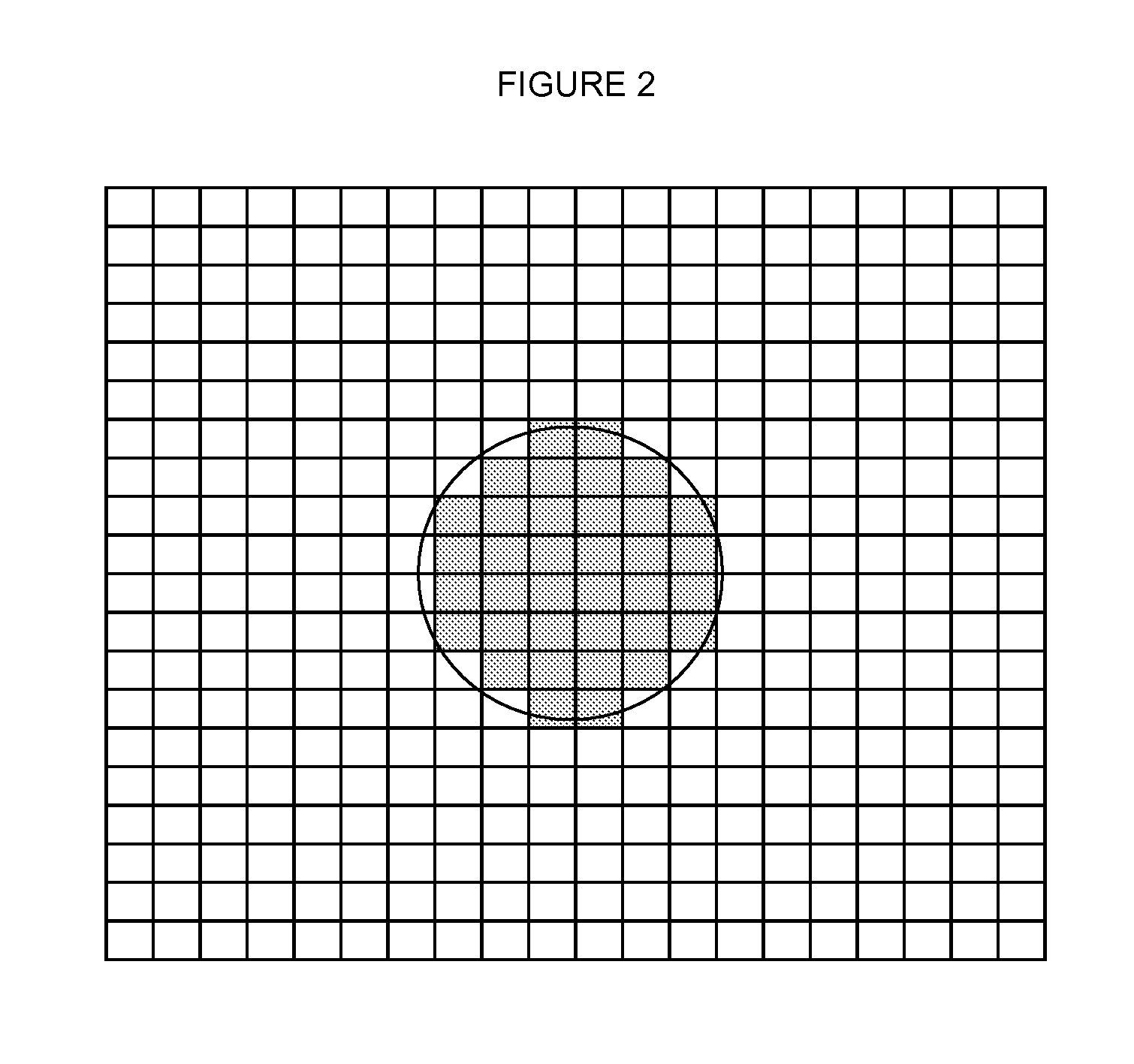Tracking vehicle locations in a parking lot for definitive display on a GUI
a technology for locating vehicles and parking lots, applied in vehicle position/course/altitude control, process and machine control, instruments, etc., can solve the problems of inefficient use of labor, lost vehicle sales, and lost revenue from locating vehicles, etc., to achieve accurate and rapid locating of vehicles.
- Summary
- Abstract
- Description
- Claims
- Application Information
AI Technical Summary
Benefits of technology
Problems solved by technology
Method used
Image
Examples
Embodiment Construction
[0073]The implementation of the invention in this embodiment comprises two main stages: first, the configuration of overall lot area, sub-areas, lots and vehicles or mobile objects; and second, the placement of vehicles or mobile objects based on raw (x,y,z) coordinates as adjusted by business environment rules based on sub-area and mobile object compatibility, for definitive display on a screen at improved resolution.
[0074]Firstly, as shown in FIG. 1, at step 1, the (2 or 3 dimensional) parking space to be digitized is surveyed. The borders of the space are then input on a central server at step 2. At step 3, the error radius E of the vehicle location technology is input. At step 4 the shortest dimension of any sub-area is input for determining minimum required individual cell size. (Cell will have square or cube shape for 2D or 3D map). At step 5, the various different physical types of the sub-areas are determined, (grass, building, movement slot, parking slot), together with the...
PUM
 Login to View More
Login to View More Abstract
Description
Claims
Application Information
 Login to View More
Login to View More - R&D
- Intellectual Property
- Life Sciences
- Materials
- Tech Scout
- Unparalleled Data Quality
- Higher Quality Content
- 60% Fewer Hallucinations
Browse by: Latest US Patents, China's latest patents, Technical Efficacy Thesaurus, Application Domain, Technology Topic, Popular Technical Reports.
© 2025 PatSnap. All rights reserved.Legal|Privacy policy|Modern Slavery Act Transparency Statement|Sitemap|About US| Contact US: help@patsnap.com



